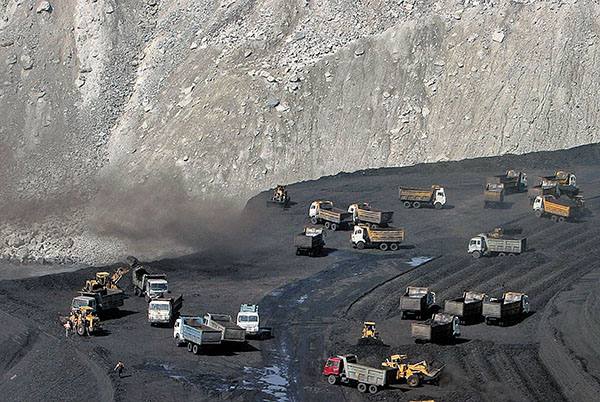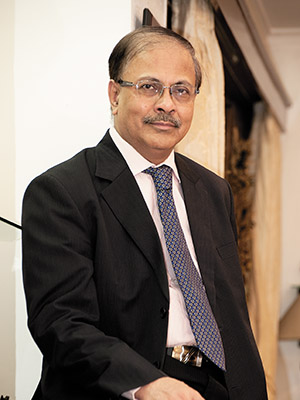
Partha Bhattacharya: The Public Sector Can Deliver if it is Empowered
Reforms in the functioning of central public sector enterprises are mandatory to ensure equity in India’s growth story. Managerial autonomy is vital
Partha S Bhattacharyya
Profile: Partha Bhattacharya retired as Coal India CMD in 2011. Before leading CIL to its IPO he turned around subsidiary Bharat Coking Coal and changed the way CIL evaluated its projects. He had a short stint at Haldia Petrochemicals before joining Deepak Fertilisers and Petrochemicals in 2012.
I was part of a delegation of central public sector enterprise (CPSE) heads that visited China in 2009 to study the state-owned enterprise (SOE) reforms carried out by them earlier in the decade. In 2002-03, China disbanded quite a few economic ministries and brought more than 150 large SOEs under one umbrella—State Assets Supervision and Administration Commission (SASAC) chaired by a minister, very senior in the hierarchy, and supported by a few vice-chairmen to whom the SOE chiefs reported.
A vice-chairman candidly explained the division of responsibility between SASAC and the SOEs: “The SASAC appoints, removes, rewards, punishes and empowers the SOE head to do his job—the rest is all his.” For larger organisations, the heads are chosen through a global search among eligible Chinese nationals, and offered competitive compensation packages. The focus is on thorough verification and putting the right person in the right job. Thereafter, complete trust is placed in the chosen candidate unless serious non-performance or lack of integrity is established.
Between 2003 and 2008, the SASAC-controlled SOEs delivered an average top line and bottom line growth of around 200 percent. A collaborative style of functioning emerged among SOEs, as opposed to the compartmentalised approach prevalent earlier. Later, in November 2010, I met the chairman of China Shenhua at a conference of the World Coal Association in Brussels. He confirmed that, post-IPO and after coming under the SASAC, the company had rediscovered its strength and was pursuing a diversified growth path with full empowerment.
Indian CPSEs, described as ‘Temples of Modern India’ by Pandit Jawaharlal Nehru, were created largely in the 1950s, ’60s and ’70s with the definite purpose of “attaining the commanding heights of the economy”. The capital expenditure and, in some cases, the operating expenditure were funded by the government. This enabled the CPSEs to move into uncharted capital-intensive core areas, shunned by the private sector till then for perceived higher risks. Steel, coal, power, oil and gas, fertiliser, heavy engineering, defence equipment and infrastructure became the areas dominated by CPSEs.
Initially, the focus was on capacity addition and production growth rather than financial viability. Till the late ’80s, the balance of cash flows from the government to the CPSEs, on account of budgetary support for plan outlays and non-plan support, net of tax and dividend receipts, were in favour of the public enterprises. This became gradually unsustainable and a new government, in 1991, planned a phasing out of budgetary support as part of its economic reforms programme, which it had to adopt to win the support of the International Monetary Fund.
Many predicted doomsday for the CPSEs. But most of them reformed to overcome the challenges, with some measure of government support. They had run into huge cumulative losses till the ’80s; however, they not only turned profitable but became capable of contracting long-term commercial debt for funding capital expenditure plans like their private counterparts. Soon after, the cash flows reversed in favour of the government. Today, the aggregate net contribution of CPSEs to the exchequer is formidable, forming an important component of the revenues. Among the 50-odd listed CPSEs, two or three find a place in the top 10 listed companies in terms of market capitalisation.

CPSEs can genuinely lead in promoting growth with equity. A serious debate may be initiated on whether the SASAC model can be adapted to Indian conditions. To begin with, the government should appoint the chief managing director (CMD) through an intensive search among Indians. Appointment of directors should be notified by the government as owner, based on the recommendation of a duly constituted personnel committee of the board with the CMD or an eminent non-official director in the chair. It is imperative for the CMD to have a substantial say in the selection of directors in order for them to function as a team. The boards should have complete autonomy in the business affairs of the CPSEs. The non-official directors should be chosen from professionals of repute based on the recommendation of the board. The intervention of the government should be strictly limited to performance monitoring of the annual MOU.
Decision-making at all levels, without fear or favour, should be systematically encouraged. Complaints against CPSE officials should not be entertained unless it is in the form of a sworn affidavit. While whistleblowers should be encouraged, punitive measures must be taken against complainants making false complaints.
These reforms shall enable our CPSEs to match the best-in-class and will go a long way to ensure faster equitable growth of the economy and society.
-
 Nabinsinha
Nabinsinhai do not agree to the comments of mr aloke parti. if there are not check and balances like the CAG, CBI and CVC, then there would be rise of corruption. mr parti had been secretary of the coal and the present SC monitor cases and the CAG report are indicators of the corruption. one needs development. but there should be corruption free development.
on Aug 28, 2013 -
 Nabin Sinha
Nabin Sinhathis is wonderful write up. the need of the hour specially when the economy is having its low ebb, to strengthen the PSUs and then to have its growth. thought he government has the policy of its tenure and people at the age of 60 retires. but there should be a good system that these people should be roped in to contribute in the PSUs economy
on Aug 28, 2013 -
 R J Sinha
R J SinhaThe PSUs are run by IAS officers, who have no experience of anything other than gathering facilities for themselves. AND this is the reason for failure of PSUs.
on Aug 16, 2013 -
 Binay Jha, Chief Reporter, Dainik Jagran
Binay Jha, Chief Reporter, Dainik JagranAll depend upon govt intention and cmd calibre. Remember the CIL case in the matter of FSA and price pooling. Independent non-official directors protested the unjustified pressure of govt. Due to this cost plus scheme came. otherwise we had to witness another scam. Govt did not respect decision of board. Presidential directive promulgated in the matter of FSA. It is not good practice. I hope your article will initiate new and desirable debate.
on Aug 16, 2013 -
 L. K. Bose, Former Executive Director, Coal India
L. K. Bose, Former Executive Director, Coal IndiaThis is an excellent article from a person who had the experience of dealing with Corporate Finance for over two decades and later showed his worth in turning round sick organisation like BCCL. I fully support his view that CMDs to be given due power for selection of their team. Decision making process at different levels should be encouraged. There should be a system of monitoring authority and responsibilty at different levels and develop a system of rewarding the achievers.
on Aug 15, 2013 -
 Vsjain
VsjainThere is a merit that selection of Chairman/MD should be through search route. compensation package should also be market driven. The most important point is that he must be delegated enough powers to perform. accountability should be with reference to results achieved against given targets.
on Aug 15, 2013 -
 P S Mukhopadhay
P S MukhopadhayYour article is based on your vast experience and a gift for us on Independence Day.We Welcome such article in future also.
on Aug 15, 2013 -
 Alok Perti
Alok PertiA good article but yet short of emulating the Chinese model. Unless the government gives the management freedom of action and does not find fault in a commercial decision taken by the management after due diligence in case the returns are not as good as may be estimated or notionally perceived. If government including the CBI is inclined to use these instances as occasions to initiate vigilance action then you cannot expect great performances by CEOs of PSUs. Government should think out of the box and create a separate mechanism for keeping vigil and under no circumstances the CBI be allowed to investigate unless the line ministry gives clearance. One can see clearly why despite the government intentions and encouragement to PSUs to acquire raw material assets overseas the progress is dismal. It has become an excuse to travel abroad with government blessing and no out comes.
on Aug 14, 2013 -
 Rakesh Dubey, Coal Insights
Rakesh Dubey, Coal InsightsExcellent article from an excellent personality who took Coal India to altogether different level.
on Aug 14, 2013 -
 Nebula
NebulaIndian public sector companies are forced to give thousands of crores in subsidy simply to keep the Indian economy running. There should be greater appreciation about the crucial role played by PSUs and their employees.
on Aug 13, 2013 -
 Soumen
SoumenThis reinstates our faith in India\'s public sector enterprises. China has become a world power on the strength of its state owned companies. It is time India too harnessed the full capacity of its PSUs, which basically are very strong companies.
on Aug 13, 2013 -
 Chandan Roy Former Director Ntpc And Chairman Rgppl
Chandan Roy Former Director Ntpc And Chairman RgpplI like the lucid and smooth flowing style of Partho. I was also part of the study team along with Partho. I cant agree more. Present PSU s have delivered great result inspite of highly constrained working enviornment. The PSU is now being asked to RUN faster with hands and legs tied up ! Further, its time we evaluate that Really, How much INDEPANDANT are the INDEPANDANT Directors. The current process of identification and appointment of Independent Directors needs to be introspected so that only best in class who has track record of risk appetite, turnarounds,etc recommend themselves.
on Aug 13, 2013 -
 H. C, Chakrabarti
H. C, ChakrabartiA wonderful writeup by Sri. P. S. Bhattacharya. He did a lot for Coal India
on Aug 13, 2013 -
 Suranjana
SuranjanaThis proves that mining in India should remain in the hands of public sector units and should never have been handed over to private companies have no respect for either science or nature.
on Aug 13, 2013 -
 Indra R Sharma
Indra R SharmaWhy has Coal India failed to mine sufficient coals for the power plants? Is it not criminal to import coal when our CAD is so bad? Who stops the CMD to take all the steps to increase production?
on Aug 12, 2013















